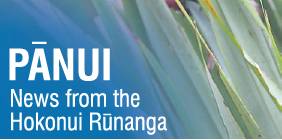During the upcoming months, Te Wai Māori (the Māori Freshwater Fisheries Trust) team at the Hokonui Ru ¯nanga will start their freshwater monitoring.
The last couple of months, we have been looking into mahinga kai (food gathering sites) Māori used when travelling on ka ara tawhito (traditional trails).
The Mataura River was an important mahinga kai site along the trails from the coast through to the lakes in Otago.
Our goal this summer is to go to as many sites along the Mataura River and tributaries that were once popular feeding grounds.
We will be using different methods to find as many native taonga species such as traps, electro fishing and night monitoring to see if these mahinga kai sites are still viable.
Electrofishing will be our main method when looking for freshwater species.
It is a good way to count and identify freshwater species as the electricity only stuns the fish.
This gives us enough time to catch the fish, measure and identify them before putting them back into the river.
A couple weeks ago we went down to the river next to Alliance and electrofished along the bank.
With the update of the flood banks, we made sure there were no kanakana (pouched lamprey) living along the bank before the habitat changed.
This was our first outdoor preparation before we start our summer programme inthe next couple of months.
Another method we will be using is putting out a variety of traps including gee minnow traps, hīnaki nets and whakaweku (artificial fern habitat).
These are ways to catch species in places we aren’t able to electrofish.
To begin the kanakana migrating season, a couple of members from the team have been going down to Mataura Falls at night to look for kanakana as this is when the they swim up the falls.
As kanakana numbers increase, we will be catching them and transferring them above the falls to help the population grow.
We will also be keeping an eye on any red spots along their skin as this is a disease we want to learn more about.





